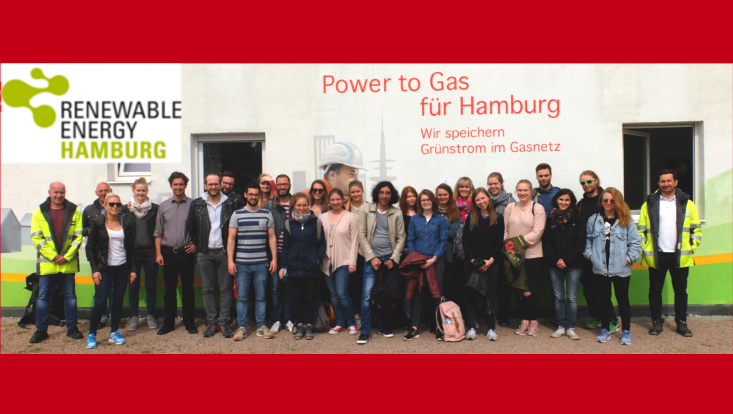insb. Energie- und Umweltmanagement
Excursion to the HanseWerk AG InnovationsstandortMay 12th, 2017
19. Mai 2017

Foto: Ehmann
This summer term, Prof. Busch teaches the seminar in “Energy & Environmental Management” as part of the newly established master programme Interdisciplinary Public and Nonprofit Studies (M. Sc.) at the University of Hamburg. On May 12th, Andreas Findeisen, project manager for innovation management at the Renewable Energy Cluster of Hamburg (EEHH), was invited to give a guest lecture introducing the work of the cluster. For the afternoon, the cluster had organized an excursion to the HanseWerk AG Innovationsstandort in Hamburg-Reitbrook, giving the students the opportunity to gain insights into pioneering energy technologies. One successful project run by the HanseWerk AG and its partners is the “Power-to-Gas” plant. This technology offers a new way of storing (renewable) energy and, therefore, can contribute to meeting key challenges related to the German Energiewende: increased flexibility and storage of access electricity.
While Thomas Brauer, project manager at HanseWerk AG, provided insights on the power-to-gas technology and its potentials, the students had also the chance to take a look at the plant on site. With a so-called Proton-Exchange-Membrane Electrolysis electricity is converted into hydrogen, which then can be fed into the local gas grid. With a Proton-Exchange-Membrane Electrolysis electricity is converted into hydrogen, which then can be fed into the local gas grid. According to Thomas Brauer, power-to-gas is currently one key technological option for storing energy in such a large scale as needed for the German Energiewende.
Another forward-looking project was presented by Hannah Boysen, doctoral researcher from the Hamburg University of Technology (TUHH). She and her team investigate how microalgae can be used as a resource for energy production and other areas of industrial application. As the cultivation of microalgae does not compete with food production, shows high growth rates, and contributes to the absorption of carbon dioxide, it can be considered as a promising alternative to conventional sources of biomass.
